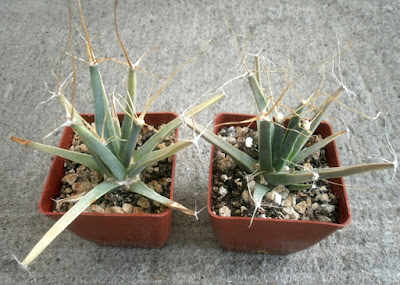And today, we have the very last of the Schlumbergera seedlings which bloomed for the first time in the 2015-16 season. And wouldn't you know it, it's orange. What are the odds.
It did photograph pretty well. I'm especially interested in the fact that a couple of the petals (technically
tepals, I think, but let's not quibble) appear to be slightly split in the center. Still not the most amazing seedling, but a little different, and we could be ending on a more boring note. So what would be a suitable name for this?
So. You know the drill by now. I tried free-associating, I looked at the list of names I've been compiling for the last few months, clicked the "random article" link on Wikipedia a dozen or so times, and nothing made me say
aha! That is definitely the best name for this seedling! Waited for the ideal name to reveal itself right up to the (self-imposed but nonetheless real) deadline, and still, nothing. I was kind of hoping to go out with a bang, but nope. So, I'm going with
Perturbed, another of the
intentionally-opaque names meant to honor a significant person from my life. And now I have a few months in which to build up a list of potential names for next year.
Now I have some awards to distribute. I think I'm going to call them the Schlummies, unless someone can propose a better name. Winners have large photos, with names in boldface.
Most Improved Returning Seedling (2014-15 season)
021B Birthday Dinner
023A Stoked
082A Strawberry Madeleine
083A Psychedelic Bunny
099A Dessert Room
021B Birthday Dinner won both because it bloomed a lot more this year and because the blooms had much stronger colors. It was such a dramatic improvement that it's probably the reason the Schlummies exist: I wanted to talk about it
so bad, but had no good excuse for doing so.
Best Overall Returning Seedling (2014-15 season)
021B Birthday Dinner
023A Stoked
078A Art Party
082A Strawberry Madeleine
099A Dessert Room
Not only did 082 Strawberry Madeleine produce a lot of blooms, it was very good at always having at least one bloom going at any given moment. It was also one of the first seedlings to produce a ripe berry and spawn some second-generation seedlings.
Most Floriferous New Seedling (2015-16 season)
018A Nudibranch
056A Demons Begone
079A Yayoi Kusama
099B Karma Cobra
105A Berry Rhubarb Fool
I'm a little puzzled about how this happened; for a first-time bloomer, 079A Yayoi Kusama had a ridiculous number of blooms, over a long period. At least some of the explanation is that she lucked into a particularly good location, but I never said the Schlummies had to be fair.
Actually, now that I think about it, 018A Nudibranch, 099B Karma Cobra, and 105A Berry Rhubarb Fool all also had unusually good locations, so one could argue that the only
deserving seedling was 056A Demons Begone.
Best New Orange Seedling (2015-16 season)
015A Nielub
018A Nudibranch
056A Demons Begone
063A Broad Brush
212A Molly Ivins
It's hard to get too excited about the orange seedlings, since there have been so many, but 018A Nudibranch was both the earliest seedling to bloom, and one of the more prolific bloomers. Plus the form and the specific shade of orange weren't bad either, though the photo doesn't show this very well.
Best New Non-Orange Seedling (2015-16 season)
079A Yayoi Kusama
099B Karma Cobra
105A Berry Rhubarb Fool
107A Nova Prospekt
217A Blood Frenzy
"Non-orange" turns out to mean "red," pretty much. Not a ton of color diversity. See above for why 079A Yayoi Kusama deserves the win. I really like this photo of 107A Nova Prospekt, and it would probably win based on the photo, except that I think that was the only bloom it produced. Maybe Nova Prospekt can pick up the Schlummie for Most Improved (2015-16) next year.
Best New Color Combination (2015-16 season)
[no nominees]
I didn't think this was too much to expect, but . . . I guess it was. Maybe in the 2016-17 season we'll find something really new.
Best New Name (2015-16 season)
056A Demons Begone
066B Sigrid the Haughty
074A Crone Island
106A Jaws of Elmo
107A Nova Prospekt
I am just fucking
delighted every time I happen to see Sigrid the Haughty on the spreadsheets. I mean, the other four nominees are all pleasant and personally significant in their own ways, but learning about Sigrid the historical/mythological figure was one of the best moments I've had in the last six months. Plus the seedling itself wound up being pretty good: not a lot of flowers, but the ones I got were of good quality.
Best Overall New Seedling (2015-16 season)
066B Sigrid the Haughty
074A Crone Island
079A Yayoi Kusama
099B Karma Cobra
105A Berry Rhubarb Fool
079A Yayoi Kusama is going to be
insufferable now. I feel bad for 079B Haleakala, who has to share a pot with her.















.png)
3.png)
2.png)



3.png)




















